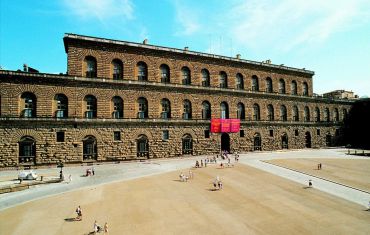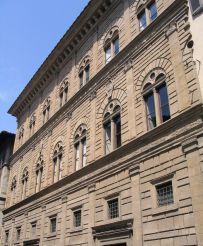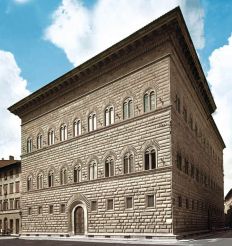Pitti Palace, Florence
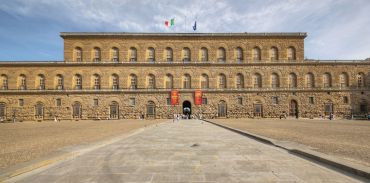
Pitti Palace in Florence (Palazzo Pitti) is one of the largest palaces in the region, located on the square with the same name. Several centuries ago the building was erected for dukes and kings, and served as an ordinary residence. Today the palazzo has the status of a monument of architecture. This is the largest museum complex in Florence. You will need a whole day to inspect all the exhibits of the palazzo's theme museums.
History of the palace
The construction of the palace in the middle of the 15th century was started by one of the best friends of the dynasty in Florence – Luca Pitti. And this is not surprising, because the Medici family, who was in power from the 13th to the 18th century, was supportive of friends and relatives.
In fact, a friend of Medici and one of the most successful bankers of the time, Luca Pitti, was dreaming about only one thing – to prove his superiority. Envy gave birth to the goal in a man’s brain – to create a palace that could surpass the residences of the great Dukes of Tuscany. The new palazzo should not only differ from others in architecture, but also have a courtyard in which the Palazzo Medici Riccardi would fit. Therefore, Pitti instructed the famous architect Filippo Brunelleschi to take on the project.
Loud construction, which involved exiles, criminals and ordinary people, was suspended in 1464 due to the offensive of the Ottoman Empire. The lack of funds for the realization of the grandiose plan led to the fact that the quiet and magnificent residence of the Medici was still the best in Italy, and the Pitti family had to live in an unfinished palace.
In 1549 the construction was resumed. However, the banker, who headed the uprising against the current government, died in 1472, and never got a chance to see his project in life. Completion of all the works was taken over by new owners – the Duke of Tuscany Cosimo I and his wife Eleanor of Toled. Only forms remained from the original project. Thus, Palazzo Pitti in Florence was presented to the world with a height of 38 m and a façade length of 205 m.
This might have been the end of a great story, but in 1565 the architect Giorgio Vasari, by order of the Duke Cosimo, expanded the palazzo and connected it with the famous corridor to the Palazzo Vecchio.
For a long time, the Palazzo in Florence changed its owners and only in 1919 it was nationalized and transformed into premises for museums. And historians concluded that the first architect was not Brunelleschi, but his pupil Luca Francelli.
Architectural features
One of the largest palaces in Florence – Pitti – was made in the Renaissance style. In the architecture of the palace, pay attention to:
- The decorative covering of the whole façade of the palazzo is a rough stone – rustication of the golden color.
- Unique frescoes, silk wallpaper and furniture of those times in the palazzo halls.
- Long balconies and loggias.
- Windows and doorways of rounded shape, which reach a height of 8 meters.
Museums of the Pitti Palace
A considerable number of museums of different subjects are concentrated in the Florentine Palazzo Pitti. The famous Boboli Gardens are nearby, behind the palace.
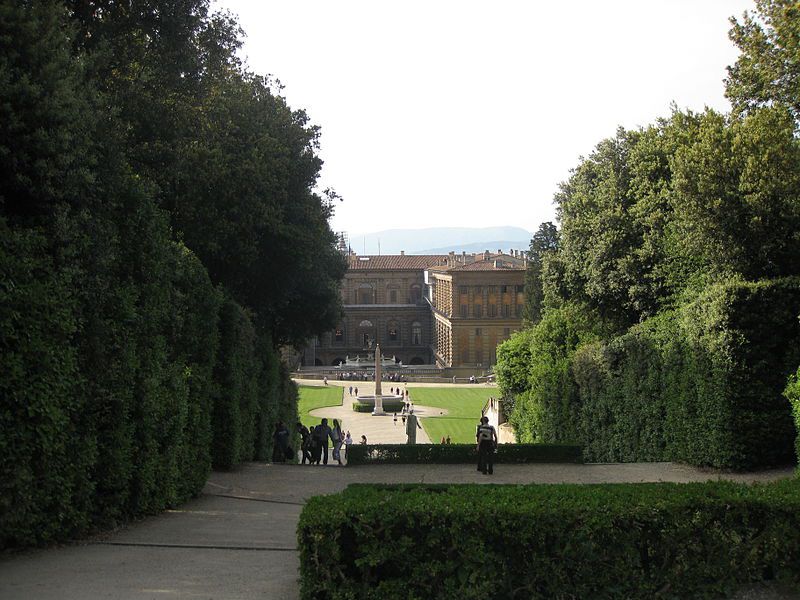 Tourists often buy a single ticket for visiting museums and the garden. Museums in the Pitti Palace:
Tourists often buy a single ticket for visiting museums and the garden. Museums in the Pitti Palace:
- Palatine Gallery. The gallery deserves special attention of connoisseurs of painting. After all, this is the only place where the magnificent Baroque style is emphasized by the unique collection of paintings of the Medici family and their followers of the Dukes of Lorraine. You will be interested not only in the exhibited paintings, but also in the painted walls of the gallery halls of the Italian artist Pietro da Cortona. The largest collection of paintings by Raphael Santi made the Palatine Gallery special. Here you can also see the halls with the famous works of Van Dyck, Titian, Velazquez, Murillo, Pontormo and others.
- Gallery of modern art. A special place in the modern Palazzo Pitti is occupied by the works of Italian masters of the 19th and 20th centuries, represented in this gallery. The masters of this era had a significant impact on the development of painting in Italy, showing the world a free manner of "Macchiaioli": bright spots, colorful lines, blurriness.
- Silver Museum. In the Silver Museum everyone can enjoy the elegance of amphorae, exclusive vases from Ancient Rome. The basis of the museum is the collection of Lorenzo di Piero de’ Medici. Valuable exhibits: products from silver, gold, ivory of different eras.
- Costume Gallery. In the wing of the Palazzina della Meridiana, Pitti Palace accommodated whole rooms and wardrobes. It is actually the only museum in Italy, focused on the history of fashion of the country. In the halls there are almost six thousand suits and accessories, mostly theatrical outfits from the 16th century to the present day. Also the costumes of some representatives of the ruling dynasties of Florence of those times, for example, Eleanor of Toledo, are presented.
- Carriage Museum. It occupies the first floor of the courtyard and represents wagons, carriages and other vehicles mainly in the 18th and 19th centuries, owned by dukes and kings.
- Also in the Palazzo Pitti there is the Porcelain Museum, the Royal apartments and some other rooms are separately presented.
How to get there
Next to the Pitti Palace there is the stop with the same name: Pitti. Buses C3, D go to it. A little further there is the stop Piazza San Felice, and a bus 11 goes to it.
Opening hours: you can visit the museums of the palace from Tuesday to Sunday. The doors opens at 8:15. The last opportunity to get inside is 17:30, as Pitti's palace is closed at 18:50. For those who want to avoid queues and save time, there is an official website where you can book tickets. The ticket price varies from 5 to 38 euros, depending on the selected museums.



